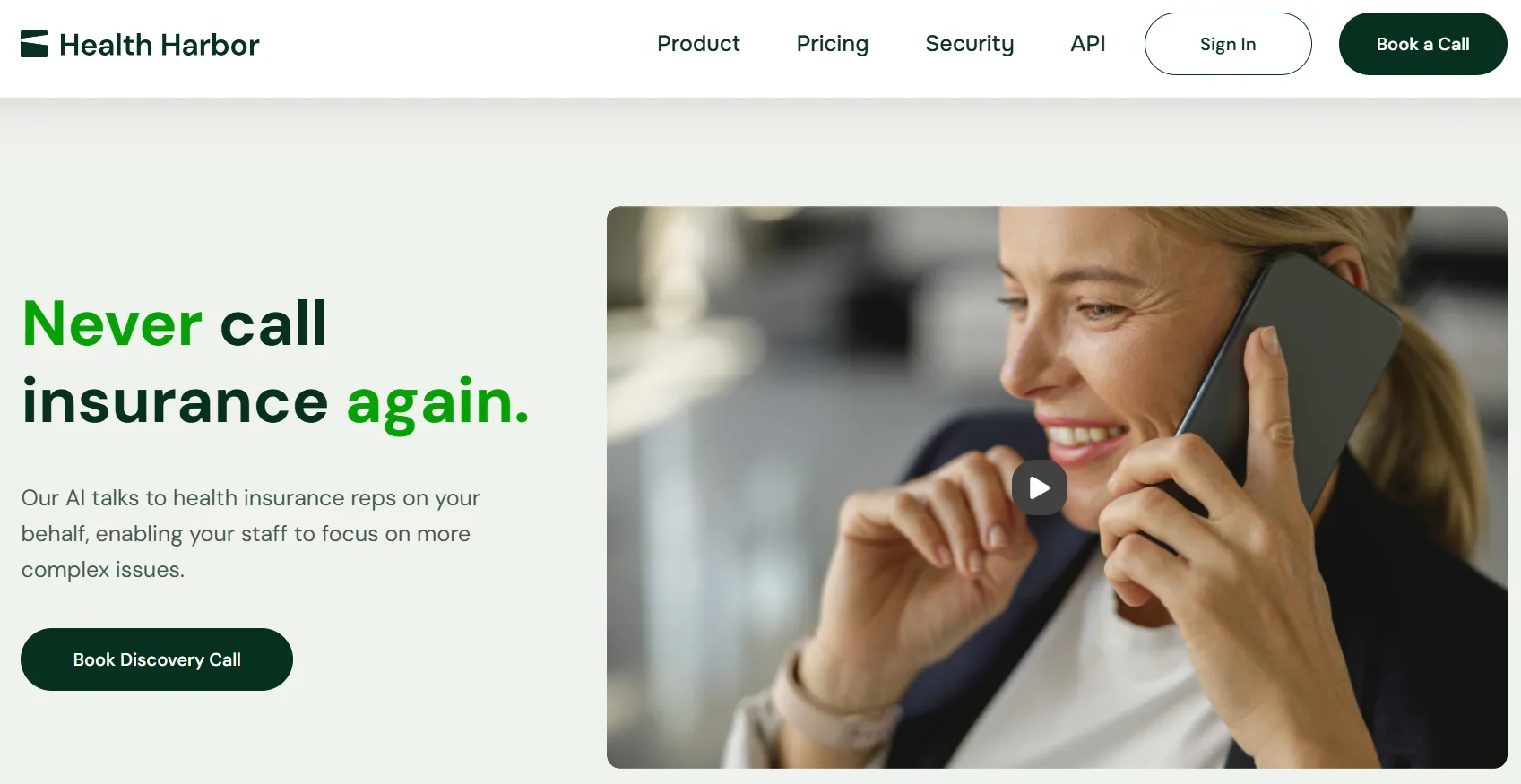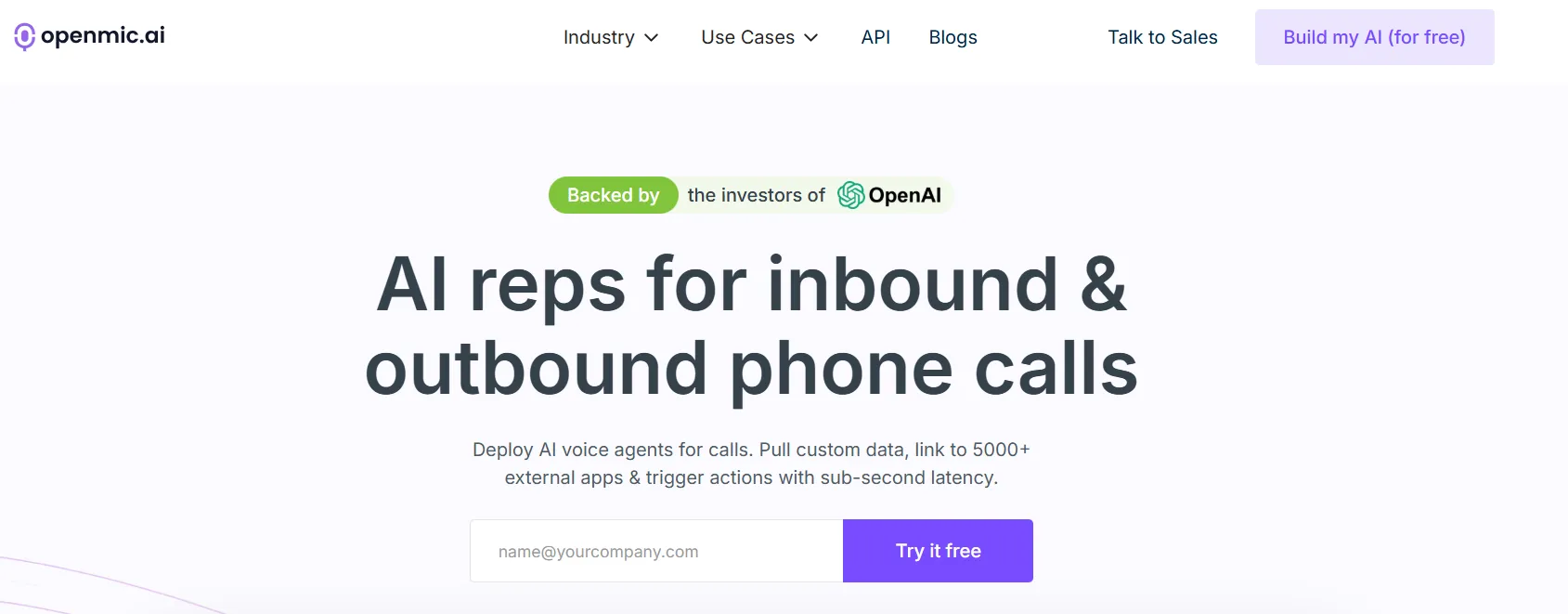.webp)
Health Harbor vs OpenMic: Comparing AI Solutions for Revolutionizing Medical Practice
In today's healthcare system, managing medical billing can be difficult. Medical practices face many challenges, like verifying insurance, tracking claims, and sending payment reminders. These tasks can take up a lot of time and lead to mistakes. But now, with AI-powered tools, things are getting easier. These tools help automate billing and reduce errors. Two companies that offer AI solutions for medical billing are Health Harbor and OpenMic.
Both companies aim to make medical billing easier, but they do it in different ways. This blog will compare Health Harbor and OpenMic, helping you understand how each one works. Our goal is to give you a balanced view of their features, so you can decide which one might be right for your practice.
What is Health Harbor?

Health Harbor helps medical practices automate their billing tasks. It uses AI to make billing easier by handling tasks like verifying patient insurance and tracking claims with insurance companies. This helps reduce the amount of work your team has to do and cuts down on mistakes, which can lead to quicker payments.
Key features of Health Harbor:
- Insurance Eligibility Verification: Health Harbor’s AI checks if patients have active insurance coverage. This helps avoid claim rejections due to mistakes about insurance.
- Claim Status Tracking: It tracks the status of claims, so your practice can follow up when needed and keep things moving.
- Automated Revenue Cycle Management: Health Harbor automates many back-office billing tasks, freeing up time for your staff to focus on patients.
While Health Harbor focuses mostly on back-end tasks, it helps your practice manage insurance claims and improve the overall billing process.
What is OpenMic?

OpenMic uses AI to improve the communication between your practice and patients. It focuses on making sure patients know their financial responsibilities, like co-pays and deductibles. OpenMic helps reduce payment issues by sending automated reminders to patients and keeping them updated on their balances.
Here are some of the features of OpenMic:
- Automated Patient Payment Reminders: OpenMic sends reminders to patients about upcoming payments, so they’re more likely to pay on time.
- Patient Payment Tracking: OpenMic keeps track of patient payments to ensure everything is up to date.
- Seamless Integration with EHR: OpenMic works with your practice’s EHR and management systems, making it easy to manage patient data and billing information.
- Clear Billing Process: OpenMic sends clear and timely communication to patients, helping them understand their billing details and making it easier for them to pay.
While Health Harbor focuses on automating billing tasks, OpenMic is all about improving communication with patients to ensure payments are made quickly.
Key Differences Between Health Harbor and OpenMic
Both Health Harbor and OpenMic aim to improve billing, but they take different approaches. Let’s compare them based on their main features:
1. Back-End Automation vs. Patient Engagement
- Health Harbor: Primarily automates back-end billing tasks. This includes insurance verification, claims tracking, and revenue cycle management.
- OpenMic: Focuses on patient communication. It automates reminders and tracks payments, helping patients stay informed and pay on time.
2. Billing Process Automation
- Health Harbor: Health Harbor’s AI helps automate tasks related to insurance, such as checking eligibility, submitting claims, and tracking their status.
- OpenMic: OpenMic automates patient reminders and tracks their payments, ensuring no one forgets to pay.
3. System Integration
- Health Harbor: Integrates with practice management and EHR systems. This means it can automatically update billing data, reducing errors.
- OpenMic: Also integrates with EHR and management systems. However, its focus is on improving patient communication by automating reminders and ensuring clear billing.
4. Pricing Structure
- Health Harbor: Offers custom pricing, based on the needs of your practice. Larger practices or those with more complex needs will likely pay more.
- OpenMic: Has tiered pricing, so it’s suitable for practices of all sizes. The cost depends on the features you need.
Estimated Pricing for Health Harbor and OpenMic
Health Harbor Pricing Estimate
- Basic Plan: Estimated at $200 - $500 per month. This plan includes insurance verification and claim tracking, which is ideal for small practices.
- Advanced Plan: Estimated at $500 - $1,200 per month. This plan includes more advanced features, such as predictive analytics for claims and better integration with your practice's systems.
- Enterprise Plan: Estimated at $1,200 - $3,000+ per month. This is for large practices with complex billing needs, offering fully customized solutions and more support.
OpenMic Pricing Estimate
- Basic Plan: Estimated at $100 - $300 per month. Includes features like patient reminders and basic billing tracking. This plan works well for solo practitioners or small practices.
- Pro Plan: Estimated at $300 - $800 per month. This plan includes more advanced features like patient follow-ups and integration with your EHR system.
- Enterprise Plan: Estimated at $800 - $2,500+ per month. This plan offers more customization and advanced features, suitable for large practices.
Why Choose to OpenMic?
If you’re looking for a solution to help improve patient communication and reduce billing issues, OpenMic offers unique features that could be just what you need. Here’s why OpenMic might be the right choice:
- Better Patient Communication: OpenMic automates reminders, helping patients understand their payment obligations and reduce missed payments.
- Affordable Pricing: OpenMic’s flexible pricing plans make it an affordable option for practices of all sizes.
- Easy to Use: The platform integrates seamlessly with your EHR system, so it’s simple for your team to adopt and use.
- Faster Payments: By automating patient reminders and ensuring clarity in billing, OpenMic helps your practice collect payments faster and more efficiently.
Conclusion: Health Harbor vs. OpenMic
Both Health Harbor and OpenMic offer AI-driven solutions that can help streamline your medical practice’s billing process. While Health Harbor excels at automating back-end tasks like insurance verification and claim tracking, OpenMic is focused on improving patient engagement to reduce missed payments and billing disputes.
If your practice needs a solution to automate insurance-related tasks, Health Harbor might be the best fit. However, if improving communication with patients and ensuring timely payments is a higher priority, OpenMic is a powerful option that can help boost your practice's cash flow and reduce billing problems.
Ready to improve your practice’s billing process? Sign up for a free demo of OpenMic today and see how our AI-driven platform can help you automate patient reminders, reduce missed payments, and make billing easier. Let OpenMic help you focus on what really matters—providing excellent care for your patients!
More curious about OpenMic AI, these blogs may help you:
A Detailed Comparison of ISSEN and OpenMic AI: Features, Cost, Usability & Scalability.
Explore related blogs
.png)
Voice AI for Mass Tort Lawyers: How Conversational AI Is Revolutionizing Case Intake & Client Engagement
.png)
Top 5 AI Answering Services for Law Firms in 2025 (24/7 Reception & Intake)
.png)
Top 5 White-Label Voice AI Platforms in 2025 (Best for Agencies & SaaS Providers)
Let AI Handle Your Phones So You Can Focus on Growth
Start your free trial and see how OpenMic’s AI voice agents can streamline calls, boost conversions, and deliver fast, 24/7 customer service — without hiring more staff.






.svg)